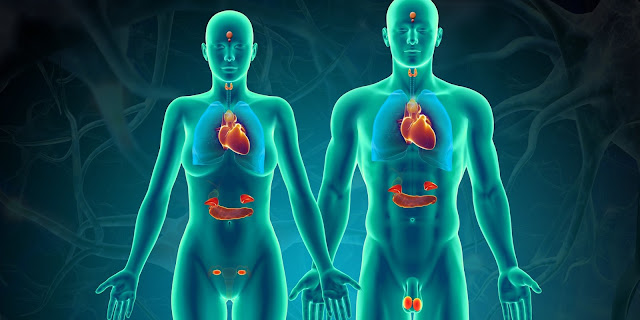Terrestrial Trunked Radio: A digital communication standard for secure radio communications
History and Development of TETRA
TETRA (Terrestrial Trunked Radio) is a digital mobile telecommunications
standard for providing secure radio communications. Developed in the 1990s by
the European Telecommunications Standards Institute (ETSI), TETRA aimed to
replace the older analog radio systems that were commonly used by national
emergency services, transportation systems, militaries and utility companies.
The first generation of TETRA was standardized by ETSI in 1995, followed by
later releases in 2000 and 2005 that expanded functionality and security.
TETRA addresses key issues that analog radio systems could not, such asbetter voice quality, spectral efficiency through frequency reuse, advanced data capability, encryption for secure communications and interoperability between different radio networks. These features made it ideal for mission-critical public safety agencies that require reliable, secure communication in their daily operations. During its development, TETRA targeted both private mobile radio and public mobile radio networks.
System Architecture and Standards
A Terrestrial
Trunked Radio network operates
via Terrestrial Trunked Radio, using time-division multiple access (TDMA) to
share the available spectrum efficiently between users. It uses 25 kHz channels
in the VHF and UHF frequency bands allocated for spectrum in each country. The
air interface standard defines the physical layer and data link layer protocols
for transmission.
TETRA systems have a centralized architecture, using one or more radio trunking
controllers to manage radio resources. These controllers establish connections
between individual or groups of radios. The network switches comprises backbone
connections between controllers and supports features like number portability
and inter-system handovers.
Key standards defined by ETSI for TETRA include air interface encryption,
authentication, dynamic group numberingplan, supplementary services and general
infrastructure requirements. Optional add-on standards have also been developed
for features such as fast call setup, multimedia services and interconnection
to external networks.
Voice and Data Services
Clear, full-duplex voice communication is the core service provided in TETRA
networks. It supports both individual and group calls, with priority call
handling. Voice quality is comparable to that of a landline phone network.
In addition to voice, TETRA networks enable various data applications. This
includes status and text messaging, telemetry and machine-to-machine services.
For public safety, features like caller identification, location information
exchange and emergency calls are supported. Optional packet data standards
allow transmitting larger data files and multimedia over TETRA.
Security in TETRA Networks
Security is a key aspect of TETRA that distinguishes it from commercial
cellular networks. Encryption is applied at both the physical layer and over
the air interface to secure voice and signalling transmissions. Built-in
authentication prevents unauthorized access and rogue base stations.
Access rights, priority calls and talk groups in TETRA can be dynamically set
and changed by controllers based on user roles and emergency situations. This
level of access control ensures only permitted users can communicate over the
network. TETRA also supports lawful interception capabilities for wiretapping
by government agencies.
Together, these security features make TETRA communications resistant to
eavesdropping and interference. This has made it a preferred technology for
military, police and other government security agencies across Europe and other
parts of the world.
Global Adoption of TETRA Technology
While initially developed in Europe, TETRA standards have seen worldwide
adoption over the past two decades. Major TETRA networks have been deployed in
over 40 countries globally as of now, used by various public safety,
transportation and utility organizations.
Key examples of large-scale TETRA networks include those operated by national
railway companies in countries like the UK, Netherlands, Germany and
Switzerland. Emergency services in countries like France, Italy and Denmark
also extensively use TETRA for coordination. Several NATO member militaries
have setup TETRA networks to enable cross-border coordination during missions
and exercises.
In recent years, TETRA has also seen growing popularity in many Asian countries
like South Korea, Taiwan and Malaysia for public safety communications. Overall
installation of TETRA infrastructure was estimated to be worth over $10 billion
globally by 2019 according to industry analysts.
Future Developments with TETRA Technology
With continued enhancements, TETRA is expected to remain a critical technology
for secure and mission-critical communication worldwide in the coming decades.
Areas of ongoing development include integrating TETRA networks with broadband
LTE networks, allowing bi-directional communication between the two.
Standards are also being defined for seamlessly interconnecting different TETRA
networks across international borders. This interoperability will boost
emergency response during natural disasters and security operations. Advanced
features using TETRA like IoT integration, on-board vehicle telematics and
drone command & control are potential growth areas in the future.
Overall, terrestrial trunked radio's strength lies in providing reliable group
communications with security in remote and challenging terrains. As critical
infrastructure and transportation increasingly depend on wireless networks,
TETRA's role in ensuring public safety and national security is set to become
even more important globally going forward.
Get more insights on Terrestrial
Trunked Radio




Comments
Post a Comment